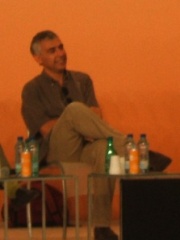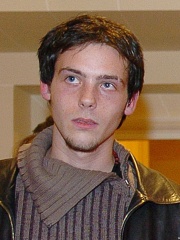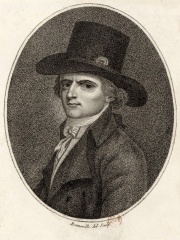
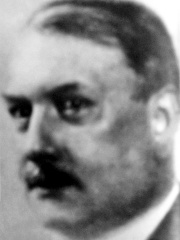
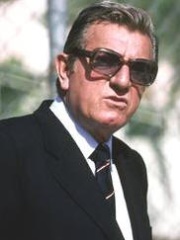
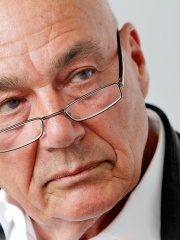
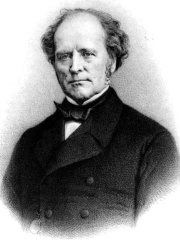
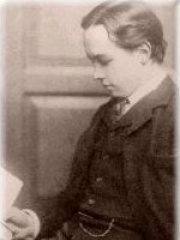
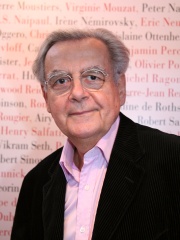
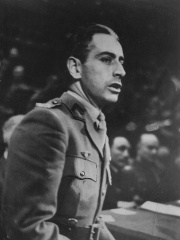
The Most Famous
JOURNALISTS from France
This page contains a list of the greatest French Journalists. The pantheon dataset contains 127 Journalists, 13 of which were born in France. This makes France the birth place of the 3rd most number of Journalists behind United States and United Kingdom.
Top 10
The following people are considered by Pantheon to be the top 10 most legendary French Journalists of all time. This list of famous French Journalists is sorted by HPI (Historical Popularity Index), a metric that aggregates information on a biography’s online popularity. Visit the rankings page to view the entire list of French Journalists.

1. François-Noël Babeuf (1760 - 1797)
With an HPI of 68.03, François-Noël Babeuf is the most famous French Journalist. His biography has been translated into 45 different languages on wikipedia.
François-Noël Babeuf (French: [fʁɑ̃swa nɔɛl babœf]; 23 November 1760 – 8 Prarial, Year V [27 May 1797]), also known as Gracchus Babeuf, was a French proto-communist, revolutionary, and journalist of the French Revolutionary period. His newspaper Le tribun du peuple (The Tribune of the People) was best known for its advocacy for the poor and calling for a popular revolt against the Directory, the government of France. He was a leading advocate for democracy and the abolition of private property. He angered the authorities who were clamping down hard on their radical enemies. In spite of the efforts of his Jacobin friends to save him, Babeuf was executed for his role in the Conspiracy of the Equals. The nickname "Gracchus" likened him to the Gracchi brothers, who served as tribunes of the people in ancient Rome. Although the terms anarchist, communist and socialist were not largely used in Babeuf's lifetime, they have all been used by later scholars to describe his ideas. Communism was first used in English by John Goodwyn Barmby in a conversation with those he described as the "disciples of Babeuf". He has been called "The First Revolutionary Communist." About his political philosophy, Babeuf wrote: "Society must be made to operate in such a way that it eradicates once and for all the desire of a man to become richer, or wiser, or more powerful than others." In the Manifesto of the Equals, Babeuf wrote: "The French Revolution was nothing but a precursor of another revolution, one that will be bigger, more solemn, and which will be the last."

2. Robert Guérin (1876 - 1952)
With an HPI of 62.35, Robert Guérin is the 2nd most famous French Journalist. His biography has been translated into 39 different languages.
Robert Guérin (28 April 1876 – 19 March 1952) (née Clément Auguste Maurice Robert) was a French journalist, and the 1st President and one of the founders of the Fédération Internationale de Football Association (FIFA). A journalist with Le Matin newspaper, Guérin was actively involved in football through his role as secretary of the Football Department of the Union des Sociétés Françaises de Sports Athlétiques. He brought together representatives of the first seven member countries in Paris for the signing of FIFA's foundation act and agreement of the first FIFA statutes. On 23 May 1904, Guérin (then just 28) was elected president at the inaugural FIFA Congress and remained in his post for two years, during which time another eight associations came on board, including the Football Association.

3. Jean-Marie Balestre (1921 - 2008)
With an HPI of 57.55, Jean-Marie Balestre is the 3rd most famous French Journalist. His biography has been translated into 18 different languages.
Jean-Marie Balestre (French pronunciation: [ʒɑ̃ maʁi balɛstʁ]; 9 April 1921 – 27 March 2008) was a French auto racing administrator, who became President of the Fédération Internationale du Sport Automobile (FISA) from 1978 to 1991 and President of the Fédération Internationale de l'Automobile (FIA) from 1985 to 1993.

4. Vladimir Posner (1934 - )
With an HPI of 56.81, Vladimir Posner is the 4th most famous French Journalist. His biography has been translated into 25 different languages.
Vladimir Vladimirovich Pozner (Russian: Влади́мир Влади́мирович По́знер; born 1 April 1934) is a French-born Russian-American journalist and presenter. He is best known in the West for his television appearances representing and explaining the views of the Soviet Union during the Cold War. He was memorable as a spokesman for the Soviets in part because he grew up in the United States and speaks fluent English, Russian and French. Pozner later described his role as propaganda. After the Cold War, Pozner moved to the United States to work with Phil Donahue, before returning to Moscow to continue working as a television journalist. From 2008 until 2022, he hosted the eponymous show Pozner on Russia's Channel One where he interviewed public figures.
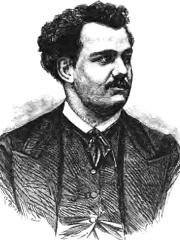
5. Victor Noir (1848 - 1870)
With an HPI of 54.57, Victor Noir is the 5th most famous French Journalist. His biography has been translated into 16 different languages.
Victor Noir, born Yvan Salmon (27 July 1848 – 11 January 1870), was a French journalist. After he was shot and killed by Prince Pierre Bonaparte, a cousin of the French Emperor Napoleon III (r. 1852–1870), Noir became a symbol of opposition to the imperial regime. His tomb in Père Lachaise Cemetery in Paris has become a fertility symbol.

6. François Mignet (1796 - 1884)
With an HPI of 53.28, François Mignet is the 6th most famous French Journalist. His biography has been translated into 19 different languages.
François Auguste Marie Mignet (French pronunciation: [fʁɑ̃swa oɡyst maʁi miɲɛ], 8 May 1796 – 24 March 1884) was a French journalist and historian of the French Revolution.

7. Robbie Ross (1869 - 1918)
With an HPI of 51.91, Robbie Ross is the 7th most famous French Journalist. His biography has been translated into 16 different languages.
Robert Baldwin Ross (25 May 1869 – 5 October 1918) was a British journalist, art critic and art dealer, best known for his relationship with Oscar Wilde, to whom he was a devoted friend, lover, and literary executor. A grandson of the Canadian reform leader Robert Baldwin, and son of John Ross and Augusta Elizabeth Baldwin, Ross was a pivotal figure on the London literary and artistic scene from the mid-1890s to his early death, and mentored several literary figures, including Siegfried Sassoon. His open homosexuality, in a period when male homosexual acts were illegal, brought him many hardships.

8. Bernard Pivot (1935 - )
With an HPI of 48.30, Bernard Pivot is the 8th most famous French Journalist. His biography has been translated into 17 different languages.
Bernard Pivot (French: [bɛʁnaʁ pivo]; born 5 May 1935) is a French journalist, interviewer and host of cultural television programmes. He was chairman of the Académie Goncourt from 2014 to 2020.

9. Pierre Brossolette (1903 - 1944)
With an HPI of 48.13, Pierre Brossolette is the 9th most famous French Journalist. His biography has been translated into 15 different languages.
Pierre Brossolette (25 June 1903 – 22 March 1944) was a French journalist, politician and major hero of the French Resistance in World War II. Brossolette ran an intelligence hub of Parisian resistance from a bookshop on rue de la Pompe, before serving as a liaison officer in London, where he also was a radio anchor for the BBC, and carried out three clandestine missions in France. Arrested in Brittany as he was trying to reach the UK on a mission back from France alongside Émile Bollaert, Brossolette was taken into custody by the Sicherheitsdienst (the security service of the SS). He committed suicide by jumping out of a window at their headquarters on 84 Avenue Foch in Paris as he feared he would reveal the lengths of French Resistance networks under torture; he died of his wounds at Pitié-Salpêtrière Hospital later that day. On 27 May 2015, his ashes were transferred to the Panthéon with national honours at the request of President François Hollande, alongside politician Jean Zay and fellow Resistance members Germaine Tillion and Geneviève de Gaulle-Anthonioz.
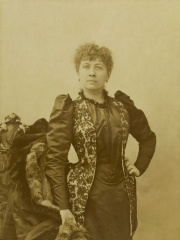
10. Caroline Rémy de Guebhard (1855 - 1929)
With an HPI of 46.39, Caroline Rémy de Guebhard is the 10th most famous French Journalist. Her biography has been translated into 18 different languages.
Caroline Rémy de Guebhard (27 April 1855 – 24 April 1929) was a French journalist with anarchist, socialist, communist and feminist views, best known under the pen name Séverine. Around 1880, Caroline Rémy became involved with Jules Vallès' socialist publication, Cri du Peuple. Vallès eventually gave her control over the newspaper due to his poor health. Becoming increasingly militant, she befriended journalist and feminist Marguerite Durand but, following a confrontation with the Marxist Jules Guesde, left the newspaper in 1888. She continued writing for other papers in which she promoted women's emancipation and denounced social injustices, including the Dreyfus affair. In 1897, she began writing for Durand's feminist daily newspaper La Fronde. A staunch leftist, Rémy backed a number of anarchist causes, including the defense of Germaine Berton, and participated in the 1927 efforts to save Sacco and Vanzetti. She supported the Russian Revolution of 1917 and, in 1921, joined the French Communist Party, resigning a few years later in order to maintain her membership of the Human Rights League. Bernard Lecache, a founding member of the Committee of Honor of International League Against Anti-Semitism (LICA), (now International League Against Racism and Anti-Semitism (LICRA)), wrote her biography. Her portrait was painted by Pierre-Auguste Renoir in 1885 and now hangs in the National Gallery of Art in Washington, DC. Caroline Rémy died in 1929 at her home in Pierrefonds, Oise department in the Picardy region of France. Some of her papers can be found in the Bibliothèque Marguerite Durand in Paris. Shortly before her death, she took part in the campaign to support the candidacy of Dr. Albert Besson, who was elected councilor of the district Saint-Fargeau, general counselor of the Seine then deputy chairman of the Council of Paris and the general council of the Seine. In 1933, in her memory, he had the Paris council vote for the attribution of the name "Séverine" to the square created at his initiative Porte de Bagnolet (Paris 20).
Pantheon has 13 people classified as journalists born between 1760 and 1983. Of these 13, 3 (23.08%) of them are still alive today. The most famous living journalists include Vladimir Posner, Bernard Pivot, and Daniel Schneidermann. The most famous deceased journalists include François-Noël Babeuf, Robert Guérin, and Jean-Marie Balestre. As of April 2022, 4 new journalists have been added to Pantheon including Robbie Ross, Pierre Brossolette, and Caroline Rémy de Guebhard.
Living Journalists
Go to all Rankings
Vladimir Posner
1934 - Present
HPI: 56.81
Bernard Pivot
1935 - Present
HPI: 48.30
Daniel Schneidermann
1958 - Present
HPI: 40.74

Deceased Journalists
Go to all Rankings
François-Noël Babeuf
1760 - 1797
HPI: 68.03
Robert Guérin
1876 - 1952
HPI: 62.35
Jean-Marie Balestre
1921 - 2008
HPI: 57.55
Victor Noir
1848 - 1870
HPI: 54.57
François Mignet
1796 - 1884
HPI: 53.28
Robbie Ross
1869 - 1918
HPI: 51.91
Pierre Brossolette
1903 - 1944
HPI: 48.13
Caroline Rémy de Guebhard
1855 - 1929
HPI: 46.39
Joseph Roffo
1879 - 1933
HPI: 42.95
Rémi Ochlik
1983 - 2012
HPI: 29.05

Newly Added Journalists (2022)
Go to all Rankings
Robbie Ross
1869 - 1918
HPI: 51.91
Pierre Brossolette
1903 - 1944
HPI: 48.13
Caroline Rémy de Guebhard
1855 - 1929
HPI: 46.39
Joseph Roffo
1879 - 1933
HPI: 42.95

Which Journalists were alive at the same time? This visualization shows the lifespans of the 9 most globally memorable Journalists since 1700.

